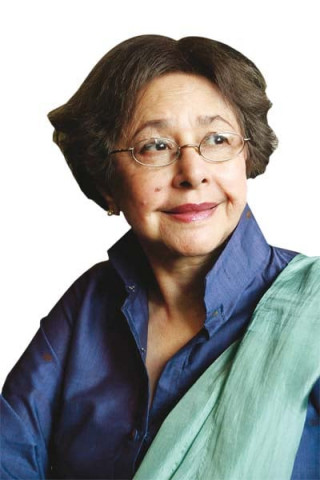Book review: City of Sin and Splendour - celebrating Lahore
Bapsi Sidhwa’s City of Sin and Splendour is a fascinating read of the complex mosaic that is Lahore.

Author Bapsi Sidhwa.
The anthology, edited by the venerable Bapsi Sidhwa, is an ambitious tome that aims to capture the magic of Lahore from many different perspectives, some laced with admiration, some with begrudging praise, some with a pang of nostalgia and some armed with sceptical understanding. It is an ode as well as a guide to the dark heart of a city that is as welcoming as a mother, yet as demanding as a fictional mother-in-law.
To start off, one has to quickly move past the feeble and bland attempts of several authors trying to retell how the city was named. After this, one can dive straight into the actual stories, which range from poetic to morose and stunning to damning. Lahore is remembered from when it was the darling of the Mughals with a historical piece by ED Maclagan called ‘The Travels of Fray Sebastian Manrique in the Punjab, 1641’. A little further on the timeline, Fakir Syed Aijazuddin’s piece titled ‘Akbar’s Capital: Jewel in the Sikh Crown’ recalls when Lahore was the battleground and barracks of the Sikhs. Pieces by Sorayya Y Khan, Ijaz Hussain Batalvi, Saad Ashraf and Rudyard Kipling capture the period of the British rule over the city. The pieces pertaining to Partition, however, are the most enchanting yet harrowing in the same breath. Historical Lahore still lives on in the Lahore Fort, the Badshahi Mosque and the many Mughal relics still scattered around the city. The fact that the city’s heritage that spoke of a pluralistic collective, which was inclusive and welcoming of people of all religions and ethnicities, has been lost can be ascertained from pieces by Krishen Khana, Ved Mehta, Urvashi Butalia, Meena Arora Nayak and the eternally irrepressible Khushwant Singh.

No book about Lahore may be complete without a word from two of the rowdiest and proudest men Lahore has had the pride of providing a home to: Saadat Hassan Manto and Khushwant Singh. Manto’s ‘Toba Tek Singh’ appears early in the anthology, whereas somewhere around the halfway mark Singh’s essay ‘Lahore, Partition and Independence’ makes a gleefully damning appearance. Singh recounts his earlier days as a lawyer at Lahore High Court, his interactions with the social circles and his unforgettable interaction with volatile artist Amrita Sher Gill, who was known as ‘Frieda Kahlo of the East’. In the same section of the book, Minoo Bhandara writes about when Ava Gardner arrived in Lahore for shooting Bhowani Junction. A snidely refreshing essay from Ismat Chughtai about the obscenity trial she and Manto had to face in Lahore sums up the cultural and social vortex the city has always been. Jugnu Mohsin’s fascinating interview with the revolutionary poet Habib Jalib lends gravitas to Lahore’s reputation as a birthplace of revolutions, and another interview with the authoritative man of letters and arts Zia Mohyeddin authenticates the fact that Lahore has been the birthplace of stars. And when it comes to stars of Lahore, none shone brighter than the Melody Queen, Madam Noor Jehan. Khalid Hasan’s brief yet intensive profile of the songstress and her legend reads like a cinematic piece. The essay introduces her humble beginnings, shapes a scintillating yet somber narrative of her passions and progress in the film and music industry. It ends on a shikwa of sorts, that a woman who loved Lahore so intensely is not buried here.
The anthology is a suitable tribute to a city that is constantly evolving. Perhaps the only thing that lets down the anthology is the oversight in properly assigning a genre to many of the pieces. Whether they are fiction or fact is a task assigned to the reader, and those not familiar with the writers may be left wondering. Other than that, it is a good enough companion both for those who love or those who loathe the city.
Nuzhat Saadia Siddiqi is a freelance writer based in Lahore. She tweets @guldaar.
Published in The Express Tribune, Sunday Magazine, March 29th, 2015.



















COMMENTS
Comments are moderated and generally will be posted if they are on-topic and not abusive.
For more information, please see our Comments FAQ